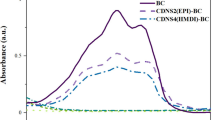Abstract
Bioavailability and activity of natural polyphenols, resveratrol (RES) and dihydroquercetin (DHQ), included in phospholipid nanoparticles have been investigated. Specific features of RES and DHQ in these compositions have been analyzed in vivo and in vitro experiments in comparison with free substances. Preincubation of low density lipoproteins (LDL), isolated from plasma of healthy donors, with RES or DHQ included in phospholipid nanoparticles caused a more pronounced delay in Cu2+ induced lipid oxidation compared with the free substances, and reduced the formation of lipid peroxidation (LPO) products. In phospholipid formulations bioavailability of RES and DHQ orally administered to rats were 1.5–2-fold higher than that of free substances. Prophylactic administration of phospholipid formulations containing RES or DHQ for two weeks resulted in the 25% increase of animal survival in the acute hypoxia model and 1.5-fold increase of catalase activity assayed in brain homogenates as compared with free substances. Using the model of endothelial dysfunction in rats induced by L-NAME, nitric oxide synthase inhibitor, it was shown, that RES markedly attenuated the inhibitory effect of L-NAME on NO synthesis. RES administered in phospholipid nanoparticles demonstrated the same efficiency at a dose one order of magnitude lower compared than that of free RES. The load test with resistance (clamping of the ascending aorta for 30 s) showed that the phospholipid formulation of RES exhibited a more pronounced protective effect due to stimulation of endothelial NO-synthase.
Similar content being viewed by others
References
Tarahovsky, Y.S., Muzafarov, E.N., and Kim, Y.A., Mol. Cell Biochem., 2008, vol. 314, nos. 1–2, pp. 65–71.
Vang, O., Ahmad, N., Baile, C.A., Baur, J.A., Brown, K., Criszar, A., Das, D.K., Delmas, D., Gottfried, C., Lin, H.Y., Ma, O.Y., Mukhopadhyay, P., Nalini, J.M., et al., PLoS One, 2011, vol. 6, no. 6, e18881, pp. 1–11.
Weidmann, A.E., Eur. J. Pharmacol., 2012, vol. 684, nos. 1–3, pp. 19–26.
Kulkarni, S.S. and Cant, C., Biochim. Biophys. Acta, 2014, Oct. 11, pii: S0925-4439(14)00311-1 [Epub ahead of print].
Yamagata, K., Tagami, M., and Yamori, Y., Nutrion, 2015, vol. 31, no. 1, pp. 28–37.
Nakata, R., Takahashi, S., and Inoue, H., Biol. Pharm. Bull., 2012, vol. 35, no. 3, pp. 273–279.
Emura, K., Yokomizo, A., Tavoshi, T., and Moriwaki, M., J. Nutr. Sci. Vitaminol., 2007, vol. 53, no. 1, pp. 68–74.
Potenza, M.A., Marasciulo, F.L., Tarquinio, M., Tiravanti, E., Colantuono, G., Federici, A., Kim, J.A., Quon, M.J., and Montagnani, M., Am. J. Physiol. Endocrinol. Metab., 2007, vol. 292, no. 5, E1378–13287.
Zherdev, V.P., Kolyvanov, G.B., Litvin, A.A., Sariev, A.K., Viglinskaya, A.O., Gekkiev, B.I., Grigor’ev, A.M., and Gorlov, V.V., Eksper. Klin. Farmakol., 2010, vol. 73, no. 1, pp. 23–25.
Smoliga, J.M. and Blanchard, O., Molecules, 2014, vol. 19, no. 11, pp. 17154–17172.
Naumov, A.A. and Potselueva, M.M., Tsitologiya, 2010, vol. 52, no. 4, pp. 311–316.
Cadena, P.G., Pereira, M.A., Cordeiro, R.B., Cavalcanti, I.M., Barros Neto, B., Pimentel, M.C., Lima Filho, J.L., Silva, V.L., and Santos-Magalhães, N.S., Biochim. Biophys. Acta, 2013, vol. 1828, no. 2, pp. 309–316.
Neves, A.R., Lucio, M., Lima, J.L., and Reis, S., Curr. Med. Chem., 2012, vol. 19, no. 11, pp. 1663–1668.
Ipatova, O.M., Torkhovskaya, T.I., Medvedeva, N.V., Prozorovskyi, V.N., Ivanova, N.D., Shironin, A.V., Baranova, V.S., and Archakov, A.I., Biomed. Khim., 2010, vol. 56, pp. 101–119.
Shironin, A.V., Ipatova, O.M., Medvedeva, N.V., Prozorovskyi, V.N., Tikhonova, E.G., Zakharova, T.S., Sanzhakov, M.A., and Torkhovskaya, T.I., Biomed. Khim., 2011, vol. 57, pp. 671–676.
Prozorovskaya, N.N., Baranova, V.S., Tikhonova, E.G., Ipatova, O.M., Prozorovskyi, V.N., Guseva, D.A., and Archakov, A.I., Rus. Patent no. 2252029, 2009.
Seidel, D., Alaupovic, P., Furman, R.H., and McConathy, W.J., J. Clin. Invest., 1970, vol. 49, no. 12, pp. 2396–2407.
Semigolovskyi, N.Yu., Kolbasov, S.Yu., Lisitsyn, D.V., and Fazylov, M.F., Vestn. SPb Univers., Ser. 11 (Meditsina), 2008, Suppl., pp. 41–46.
Rauchová, H., Vokurková, M., and Koudelová, J., Physiol. Res., 2012, vol. 61, Suppl. 1, pp. S89–S101.
Kataoka, C., Egashira, K., Inoue, S., Takemoto, M., Ni, W., Koyanagi, M., Kitamoto, S., Usui, M., Kaibuchi, K., Shimokawa, H., and Takeshita, A., Hypertension, 2002, vol. 39, no. 2, pp. 245–250.
Korokin, M.V., Korokina, L.V., Granik, V.G., and Makarov, V.A., Biomeditsina, 2006, vol. 4, pp. 90–92.
Artyushkov, E.B., Doctoral Dissertation in Medicine, Staraya Kupavna, 2009.
Tikhonov, I., Rodinsky, V., and Pliss, E., Int. J. Chem. Kinet., 2009, vol. 41, pp. 92–100.
Joo, S.J., Park, H.J., Park, J.H., Cho, J.G., Kang, J.H., Jeong, T.S., Kang, H.C., Lee, D.Y., Kim, H.S., Byun, S.Y., and Baek, N.I., Int. J. Mol. Sci., 2014, vol. 15, no. 9, pp. 16418–16429. doi 10.3390/ijms 150916418
Florence, A.T., J. Drug Target., 2004, vol. 12, no. 2, pp. 65–70.
Markov, Kh.M., Patol. Fiziol. Eksper. Ter., 2006, no. 3, pp. 2–7.
Mussi, S.V., Silva, R.C., Oliveira, M.C., Lucci, C.M., Azevedo, R.B., and Ferreira, L.A., Eur. J. Pharm Sci., 2013, vol. 48, nos. 1–2, pp. 282–290.
Author information
Authors and Affiliations
Corresponding author
Additional information
Original Russian Text © D.A. Guseva, Yu.Yu. Khudoklinova, N.V. Medvedeva, V.S. Baranova, T.S. Zakharova, E.B. Artyushkova, T.I. Torkhovskaya, O.M. Ipatova, 2016, published in Biomeditsinskaya Khimiya.
Rights and permissions
About this article
Cite this article
Guseva, D.A., Khudoklinova, Y.Y., Medvedeva, N.V. et al. The effect of resveratrol and dihydroquercetin inclusion into phospholipid nanopatricles on their bioavalability and specific activity. Biochem. Moscow Suppl. Ser. B 10, 138–144 (2016). https://doi.org/10.1134/S1990750816020062
Received:
Published:
Issue Date:
DOI: https://doi.org/10.1134/S1990750816020062




